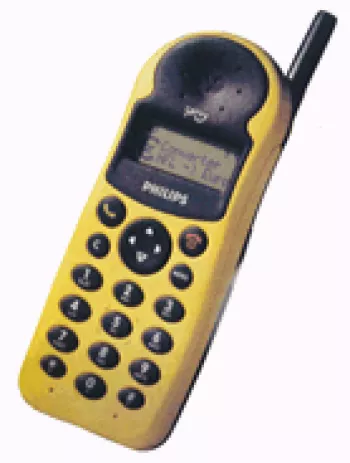
Introduction to Philips E102
The Philips E102 is a compact feature phone that was introduced to the market in 2009 and was released in February 2010. While it has since been discontinued, it remains a noteworthy device due to its simple design and basic functionality, which appealed to users looking for an uncomplicated mobile phone experience. This article delves into the various aspects of the Philips E102, including its network capabilities, physical characteristics, display, memory, communications features, and other functionalities.
Network and Connectivity
The Philips E102 operates on GSM technology, specifically supporting GSM 900 and 1800 bands, which were commonly used for 2G networks. Despite its lack of advanced connectivity features like 3G, 4G, or LTE, it offered Class 10 GPRS capabilities, which provided basic internet access sufficient for tasks like browsing light webpages or sending MMS messages. However, it did not support EDGE for enhanced data services, reflecting its status as a feature phone designed primarily for calling and texting.
Design and Build
The phone measures 108 x 47 x 12.7 mm, making it compact and easily portable. With a weight of just 68.8 g, the Philips E102 is light, allowing users to carry it comfortably in a pocket or a small bag. It features a Mini-SIM slot, indicative of its era and design focus on simplicity and ease of use. The choice of materials and the build suggests a focus on durability without sacrificing the sleekness necessary for an everyday phone.
Display Features
Equipped with a 1.4-inch CSTN display, the Philips E102 provides a minimal viewing experience. The screen supports 65,000 colors and has a resolution of 128 x 128 pixels, generating a pixel density of approximately 129 ppi. While this display is modest by today's standards, it sufficed for the basic tasks the phone was intended to handle, such as calling, texting, and navigating through menus.
Memory and Storage
The Philips E102 does not include a card slot for expandable storage, and this limitation reflects the phone's purpose as a straightforward communication device. It includes a phonebook capable of storing contacts with the photocall feature and maintains call records for the last 30 received, dialed, and missed calls, which is indicative of a focus on essential functionalities.
Audio and Sound
Sound features of the Philips E102 include a loudspeaker for listening to calls and FM radio playback without headphones. However, it does not support a 3.5mm headphone jack, limiting audio playback directly to the device's loudspeaker, unless proprietary accessories are used. This focus again emphasizes the phone's primary role as a voice-centric device with some added media functionalities.
Communication and Entertainment Features
The absence of modern wireless communication features such as WLAN and Bluetooth highlights the Philips E102's use case as a simple mobile phone. It does, however, feature an FM radio, providing users with entertainment options. The USB port, which is proprietary, allows for essential data transfers and charging.
The Philips E102 supports SMS and MMS messaging and includes a basic WAP 2.0/xHTML browser for rudimentary internet navigation. It also offers a selection of built-in games with the option to download additional ones, though it lacks support for Java applications.
Battery Life and Performance
One of the standout features of the Philips E102 is its removable Li-Ion 650 mAh battery, which provides a standby time of up to 300 hours and talk time of up to 3 hours. This battery life is sufficient for users relying on the phone for essential tasks primarily, without frequent recharging.
Conclusion
The Philips E102, with its simple yet functional design, catered to a market segment seeking reliability and ease of use without the complexities of smartphones. While it has been discontinued, the phone remains a testament to the era of feature phones where durability and voice call quality were key. For users who purchased the Philips E102, it provided a robust and straightforward communication tool, embodying the minimalistic approach typical of mobile phones before the smartphone boom.
Key Features of Philips E102
- Lightweight design, weighing only 68.8 g, making it easy to carry.
- Compact dimensions of 108 x 47 x 12.7 mm, suitable for those who prefer smaller phones.
- Basic CSTN display with 65K colors, suitable for simple tasks and readability.
- FM radio feature allowing users to listen to their favorite radio stations on the go.
- Support for SMS and MMS messaging, enabling basic communication needs.
- Includes a removable Li-Ion 650 mAh battery with up to 300 hours of standby time.
- Games available with additional downloadable options for entertainment.
Philips E102 Main Disadvantages
- No EDGE support; only has GPRS Class 10, limiting internet speed.
- Discontinued product, making it difficult to find for purchase or support.
- Small 1.4-inch screen with low resolution (128 x 128 pixels).
- Uses outdated CSTN display technology, offering limited color reproduction and viewing angles.
- No expandable memory slot present, limiting storage capacity.
- Lacks a camera feature entirely.
- No Bluetooth capability for wireless connections.
- No WLAN support for Wi-Fi connectivity.
- Does not include a 3.5mm headphone jack, limiting audio accessory compatibility.
- Proprietary USB connection, potentially requiring special cables.
- No sensors, GPS, or positioning technology included.
- Java support is absent, limiting application compatibility.
- Limited battery capacity (650 mAh), offering only up to 3 hours of talk time.


View Also
More Phones
All Rights Reserved +14266 Phones © Mobilawy 2025

























